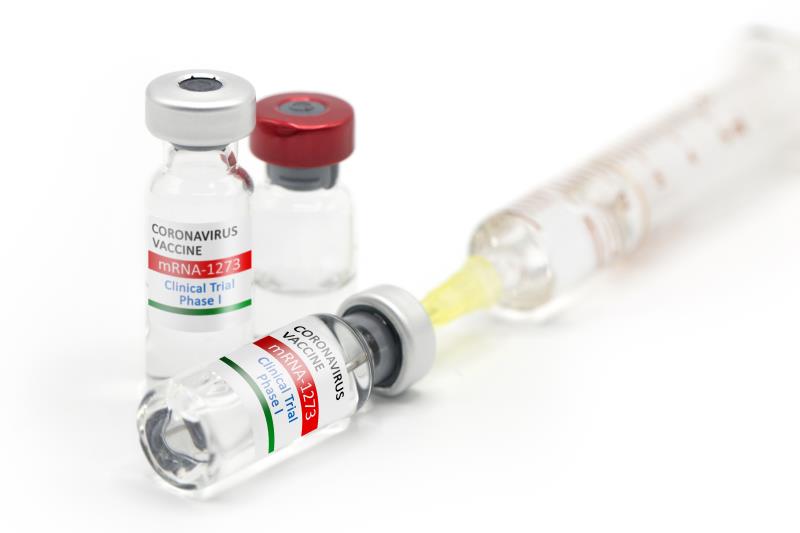mRNA-1273 vaccine induces anti-SARS-CoV-2 immune responses





Two doses of mRNA-1273, a novel lipid nanoparticle-encapsulated, nucleoside-modified mRNA-based vaccine, induced binding and neutralizing antibody responses against SARS-CoV-2 in healthy adults, according to an interim analysis of the mRNA-1273* trial.
“The mRNA-1273 vaccine candidate … encodes the stabilized prefusion spike trimer, S-2P [antigen], consisting of the SARS-CoV-2 glycoprotein, … [which] is the primary vaccine target for many candidate SARS-CoV-2 vaccines,” said the researchers from the National Institute of Allergy and Infectious Diseases and Moderna, Inc. in Cambridge, Massachusetts, US.
The researchers conducted a first-in-human, phase I clinical trial involving 45 healthy adults (aged 18–55 years). Participants received injections of mRNA-1273 at a dose of 25 µg, 100 µg, or 250 µg (n=15 in each group) on days 1 and 29. They were followed up for 7 and 14 days following each vaccination, and on days 57, 119, 209, and 394. Participants were not screened for SARS-CoV-2 prior to enrolment. ELISA** was used to assess binding antibody responses against S-2P, and PsVNA*** and PRNT+ assays were used to assess vaccine-induced neutralizing activity. A total of 41 convalescent serum specimens were also tested. [N Engl J Med 2020;doi:10.1056/NEJMoa2022483]
After the first vaccination, the highest mRNA-1273 dose (250 µg) elicited the highest antibody response at day 29 (ELISA anti-S-2P antibody geometric mean titre [GMT], 213,526), followed by the 100-µg (GMT, 109,209) and 25-µg doses (GMT, 40,227).
After the second vaccination, a further increase in GMT titres was observed across all three doses of mRNA-1273 at day 57 (ELISA anti-S-2P antibody GMT, 299,751 [25 µg], 782,719 [100 µg], and 1,192,154 [250 µg]). “[These] exceeded [those found] in convalescent serum specimens [GMT, 142,140],” said the researchers.
All participants had serum neutralizing activity that was detected by PsVNA (geometric mean ID50, 112.3, 343.8, and 332.2 for 25 µg, 100 µg, and 250 µg, respectively) and PRNT responses (geometric mean PRNT80, 339.7 and 654.3 for 25 µg and 100 µg, respectively) at day 43. “These responses were similar to values in the upper half of the distribution of values for convalescent serum specimens,” the researchers noted.
About half of the participants reported fatigue, chills, headaches, myalgia, and pain at the injection site, which were mostly mild or moderate in severity.
Of note, after the second vaccination, solicited systemic adverse events (AEs) occurred in seven and 15 patients in the 25 and 100 µg groups, respectively, and 14 patients in the 250 µg group, where three participants experienced severe AEs. “[Nevertheless,] the two-dose vaccine series was generally without serious toxicity, … and no trial-limiting safety concerns were identified,” said the researchers.
“The mRNA-1273 vaccine was immunogenic, inducing robust binding antibody responses to both full-length S-2P and receptor-binding domain in all participants … in a time- and dose-dependent fashion, … [and] commensurately high neutralizing antibody responses were also elicited in a dose-dependent fashion,” noted the researchers.
“[Furthermore,] these safety and immunogenicity findings support advancement of the mRNA-1273 vaccine to later-stage clinical trials,” they added.
*mRNA-1273: Safety and immunogenicity study of 2019-nCoV vaccine (mRNA-1273) for prophylaxis of SARS-CoV-2 infection (COVID-19)
**ELISA: Enzyme-linked immunosorbent assay
***PsVNA: Pseudotyped lentivirus reporter single-round-of-infection neutralization assay
+PRNT: Plaque-reduction neutralization testing